nonGeographicDataset
Type of resources
Topics
Keywords
Contact for the resource
Provided by
Years
Formats
Representation types
Update frequencies
Scale
-
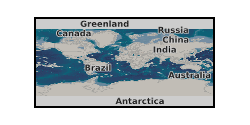
Coordinated by Haroun Mahgerefteh at UCL, the EC funded FP7 CO2QUEST project addressed the main challenges associated with determining the optimal composition and purity of CO2 product streams derived from carbon capture systems for enabling its safe and economic transport and storage. The project brought together academics and major stakeholders to perform computational studies backed-up by large-scale experiments aimed at identifying CO2 mixtures that have the most profound impact on the different parts of the CCS chain. The project ran from March 2013 until June 2016, involving 9 partners across Europe, including from Canada and China. It resulted in over 100 peer reviewed journal publications and conference proceedings, three international conferences and several newsletters, receiving the IChemE Highly Commended Global Process Safety Award in 2016. More information about CO2QUEST including its objectives, deliverables and list of publications may be found at: http://www.co2quest.eu/
-
Airborne atmospheric measurements from core and non-core instrument suites data on board the FAAM BAE-146 aircraft during flight 3 for International Transport of Ozone and Precursors (ITOP) project.
-
Airborne atmospheric measurements from core and non-core instrument suites data on board the FAAM BAE-146 aircraft collected for Autumn and Winter Experiments (AUTEX / WINTEX) project.
-
In this mesocosm study, three types of wet wipes (plastic containing, and home and commercially compostable) colonised with E. coli were buried in beach sand and their degradation, tensile strength, and concentration of E. coli was quantified over 15 weeks. Wipes were firstly passed through a series of treatments to simulate their journey from the bathroom to the beach. Water characteristics (pH, salinity) of these water types were measured. Full details about this nonGeographicDataset can be found at https://doi.org/10.5285/19a8083b-afa4-40b9-91bf-7a529eea870d
-
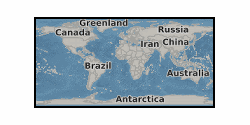
Controlled CO2 release experiments and studies of natural CO2 seeps have been undertaken at sites across the globe for CCS applications. The scientific motivation, experimental design, baseline assessment and CO2 detection and monitoring equipment deployed vary significantly between these study sites, addressing questions including impacts on benthic communities, testing of novel monitoring technologies, quantifying seep formation/style and determining CO2 flux rates. A review and synthesis of these sites studied for CCS will provide valuable information to: i. Enable the design of effective monitoring and survey strategies ii. Identify realistic site-specific environmental and ecosystem impact scenarios iii. Rationalise regulatory definitions with what is scientifically likely or achievable iv. Guide novel future scientific studies at natural or artificial release sites. Two global databases were constructed in Spring 2013, informed by a wide literature review and, where appropriate, contact with the research project leader. i. Artificial CO2 release sites ii. Natural CO2 seeps studied for CCS purposes The location and select information from each of these datasets are intended to be displayed as separate GoogleMap files which can be embedded in the QICS or UKCCSRC web server. These databases are not expected to be complete. Information should be added as more publications or become available or more case studies emerge or are set up. To facilitate this process, a contact email should be included beneath the map to allow viewers to recommend new or overlooked study sites for the dataset. Grant number: UKCCSRC-C1-31. These data are currently restricted.
-
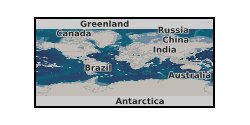
Carbon Capture and Storage (CCS) is a crucial technology to enable the decarbonisation of fossil fuel electricity generation. The UK has considerable potential for geological storage of CO2 under the North Sea and extensive offshore industry experience that could be applied. While initial storage is likely to be undertaken in depleted oil and gas fields, much larger saline aquifer formations are estimated to have sufficient capacity to securely contain 100 years of current UK fossil fuel power plant CO2 emissions. The CO2 Aquifer Storage Site Evaluation and Monitoring (CASSEM) project brings together the experience and different working practices of utilities, offshore operators, engineering contractors, and academic researchers to build collective understanding and develop expertise. CASSEM produced both new scientific knowledge and detailed insight into the CCS industry, developing best-value methods for the evaluation of saline aquifer formations for CO2 storage. Alongside work to assess the storage potential of two saline aquifer formations in close proximity to large coal power plant, CASSEM applied a novel Features, Events and Processes method to explore perceptions of risk in the work undertaken. This identified areas of industry and research community uncertainty and unfamiliarity to enable targeted investment of resource to reduce overall project risk. An openly accessible and flexible full chain (CO2 capture, transport and storage) costing model was developed allowing the CCS community to assess and explore overall costs. CASSEM's work also included the first use of citizen panels in the regions investigated for storage to assess public perception and educate the general public about CCS.
-
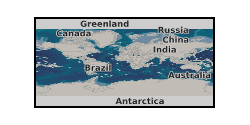
Technical report from CO2MultiStore project, component of ‘Optimising CO2 storage in geological formations: a case study offshore Scotland, September 2015. The report captures knowledge gained from the process, progress and findings of the research that is applicable to the development of any multi-user storage resource. Available for download at http://hdl.handle.net/1842/16475.
-
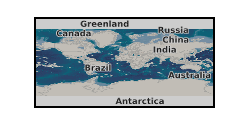
Rotating Rayleigh-Benard convection. Table of the input and output parameters of the simulations. Snapshot of the temperature field, three components of the velocity and three components of the magnetic field in 3D. Data generated with a magnetohydrodynamical code of rotating Boussinesq convection in planar geometry (Cattaneo et al. 2003 ApJ 588 1183-1198). Data published in Guervilly, Hughes & Jones 2014 JFM 758 407-435 (DOI:10.1017/jfm.2014.542) and Guervilly, Hughes & Jones 2015 PRE 91 041001 (DOI: 10.1103/PhysRevE.91.041001)
-
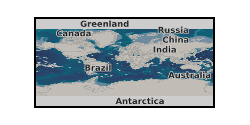
Carbon Capture and Storage (CCS) technologies are critical for the UK to achieve its an ambitious target to reduce CO2 emissions by 80% by 2050. The development of an accurate, cost efficient and scalable metering technology that could be deployed in the commercial scale transportation of CO2 by pipeline for CCS purposes is critical for the deployment of CCS. However, current technologies employed in metering CO2 flows by pipeline are unable to provide the required levels of accuracy, particularly in situations where the CO2 stream contains different levels of impurities. Accordingly, in this project we will conduct laboratory trials to assess meters for accurate flow measurements, and ultimately develop technical specifications for accurate flow metering for CCS applications. Grant number: UKCCSRC-C2-201.
-
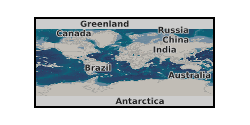
The QICS controlled release experiment demonstrates that leaks of carbon dioxide (CO2) gas can be detected by monitoring acoustic, geochemical and biological parameters within a given marine system. However the natural complexity and variability of marine system responses to (artificial) leakage strongly suggests that there are no absolute indicators of leakage or impact that can unequivocally and universally be used for all potential future storage sites. We suggest a multivariate, hierarchical approach to monitoring, escalating from anomaly detection to attribution, quantification and then impact assessment, as required. Given the spatial heterogeneity of many marine ecosystems it is essential that environmental monitoring programmes are supported by a temporally (tidal, seasonal and annual) and spatially resolved baseline of data from which changes can be accurately identified. In this paper we outline and discuss the options for monitoring methodologies and identify the components of an appropriate baseline survey. This is a publication in QICS Special Issue - International Journal of Greenhouse Gas Control, Jerry Blackford et. al. Doi:10.1016/j.ijggc.2014.10.004.
 NERC Data Catalogue Service
NERC Data Catalogue Service